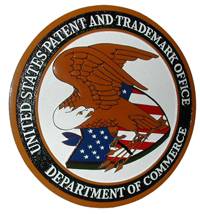Department of Chemistry and Biochemistry license new polymer
By Marc Speir
University News Service
October 25, 2007
 |
If you looked up No. 6,172,181 in the U.S. Patent Office, you’d find a product named 2,3,4,5,6-pentafluorobenzoyl diphenyl ether compound and fluorine-containing aryl ether ketone polymer.
While the name is quite a mouthful, the fluorinated polymer, one that has the extraordinary ability to withstand intense temperatures, is the brainchild of the Department of Chemistry and Biochemistry at Texas State University-San Marcos.
During a trip to present research papers at Japanese universities in 1996 by retired distinguished professor emeritus John Fitch and current professor Patrick Cassidy, the pair was approached by Nippon Shokubai, a maker of chemicals with offices in
The company was looking for a new product, one that could insulate and protect other materials from extreme heat. The organization gave a grant to Fitch, Cassidy, Kunio Kimura, Yuhiko Yamashita, and Reddy Venumbaka, the current director of the Institute for Environmental and Industrial Science at
The product took two years to create, resulting in a new plastic polymer and a patent issued Jan. 9, 2001. More than six years later, the licensing agreement is paying dividends for the company, the researchers and the university.
“This is the first purchase in what we hope will create more interest in the polymer,” said Cassidy, a professor in the Department of Chemistry and Biochemistry. “It’s great to see the department hit a home run like this.”
Companies are expected to license the innovative polymer for a variety of purposes.
The material can be used as a film or coating for silicon wafers, optical devices, microelectronics, medical equipment, military armory, satellites and space shuttles.
Cassidy compares the polymer to Teflon, a fluoropolymer that is famous for creating non-stick cookware and keeps stains off carpet and clothing.
Similar fluoropolymers are used by NASA, 3M Company and cosmetics company Estee Lauder.
“This is particularly beneficial for anything that needs thermal stability,” said Cassidy. “The one big difference is that our product is easier to process than Teflon, it’s more soluble.”
The inventors will receive $2,000 each and 0.25 percent of annual net sales as a royalty.
“The real reward is the recognition for our program,” said Cassidy. “We’ll see where it goes from here.”
The department expects more technology transfers as
“We’re getting more aggressive in finding companies to help with technology transfers,” Cassidy said. “It’s a very exciting time to be at